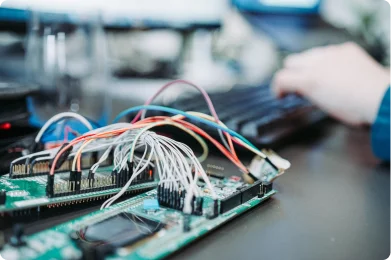Ericsson released its mobility report for 2015 not long ago, and the report is just filled with important facts and projections on how people will use mobile devices in the near future. We’re going to highlight some of the bigger points from the report and explain how they can impact you and your organization in the coming years.

1. Data usage will go way up in North America
In Canada, data usage per smartphone will grow fivefold between 2014 and 2020. Taking a broader view, Ericsson expects that North America as a whole will see this traffic grow eightfold.
By now, this should come as no surprise, especially since other studies have made similar conclusions. While the numbers may vary from one study to the next, they’re all pointed in the same direction. So there are plenty of reasons to believe (and prepare for) the crush of data usage that’s coming our way.
2. Data usage will go up even more (nearly) everywhere else
As impressive as the North American numbers above may be, they’re actually smaller than what we can expect elsewhere in the world. Europe, the Middle East, Africa, and Asia will have the lion’s share – those areas are will likely see mobile data traffic grow by up to 11 times. Amazingly, China alone is expected to add about 400 million mobile subscriptions in the next five years.
Although improved technology and network access is a big factor in this growth, I’d say that this is also builds on the fact that many regions in these areas already had a longer tradition of doing mobile computing (such as online banking) than in North America to begin with. No matter the reason why, there’s no real getting around it – data will be everywhere. And soon.
3. 80% of all mobile traffic will come from smartphones by 2020
This projection speaks for itself. It also broadly implies that earlier ways of computing, i.e., on a desktop or laptop, are really going to be replaced by mobile computing.
4. HD voice is coming
And just as huge numbers of people have made texting the more frequent mode of communication (relative to voice), HD voice capabilities for mobile devices will be emerging. What that means is that more natural, more intelligible, and clearer voice service will be available on supporting devices and networks.
5. 10% of total subscribers will generate 55% of total data traffic
There will always be some people who use anything way more than others. As it turns out, this will be really, really true for data usage. Ericsson projects that the top 10% of users will account for 55% of all the traffic; the top 20% of subscribers will use a whopping 70% of the data.
So what does this mean for you?
1. You’re going to have to adapt the way you do business.
More people connected via smartphones (or just plain mobile devices) means that a lot more business will be done from their phones. We’re already seeing huge volumes of e-commerce on mobile devices now. What happens when 70% of us have smartphones? Hint: There’ll be even more e-commerce on mobile devices.
And because of that, if you have anything to sell or offer, it’d be in your best interest to include the mobile channel as a key venue for your wares.
2. Be really mindful of your big users and of how everyone else will use their phones.
Remember how I just said that about 20% of users will generate 70% of the data usage? Well, if you’re the one paying for their bill, you need to know who the 20% is. You’re going to have to have plans and policies in place that allow them that usage at the most competitive prices possible. You should probably also make sure that all of that usage is justified too.
Beyond that, with HD voice services becoming available, there might be some shift back toward using voice. It’s something you’re going to have to plan for when co
ntract renewals for your organization come up.
3. You’re really going to have to track and manage mobile devices, plans, and usage with software automation.
You’ve probably figured this out by now, but just in case…
If you’re managing your telecom assets with older methods, such as pen and paper or spreadsheet systems, you’re going to be overwhelmed. Worse yet, things will fall through the cracks, and you won’t be able to figure out just what it is that you’re paying for. In fact, it’s safe to argue that that’s the case now with the volume of IT and telecom devices owned and used by modern businesses.
And so, when nearly all of your employees are connected via smartphone, they’ll be doing even more work tasks on or with their smartphones. Can you imagine tracking all those devices and all that usage accurately without a powerful, automated solution?
I know I can’t. Lucky for all of us, we don’t have to do without automation, in the near future or even now. I direct your attention to CimplManager . CimplManager is our latest solution for IT and telecom expense management, and it automates the processes and workflows you need to accurately manage your inventory and your interactions with vendors and each other.
Ours is a real, proven method to managing the ever-growing volumes of data and devices associated with increasing numbers of employees. Need to see more? Check out our video and brochure, and contact us for more information. We love to help people get a handle on their business IT.
Related Articles:





